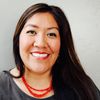
A population that was nearly decimated from colonization is now growing and thriving.
According to the 2010 Census, 5.2 million people in the United States identified as American Indian and Alaskan Native. Overall, the Native (a group that includes American Indian and Alaska Native) population had rapid growth with an increase by 39 percent from 2000 to 2010 constituting 1.7 percent of the American population.
And in the last 20 years, the enrollment rates of Native students in degree-granting institutions increased from 102,800 in 1990 to 172,900 in 2012.
Although the overall Native population and representation in higher education is increasing, too often educational scholarship provides no more than a footnote or an asterisk about Native students, indicating that the numbers are insignificant and that they cannot be studied.
President Obama hosted the sixth annual White House Tribal Nations Conference in Washington D.C on December 3. Leaders and representatives of 566 federally recognized tribes and 36 Native American Youth Ambassadors gathered and had the opportunity to interact and dialogue with President Obama and members of the White House Council on Native American Affairs.
According to an Executive Order, this convening is one way the federal government honors tribal sovereignty as well as provides opportunities for tribes to address matters such as economic development, health, and education.
In his closing remarks, President Obama stated, "Together, we can make sure that every Native young person is treated like a valuable member not only of our nation, but of the American family."
Days following that Tribal Nations Conference, A 2014 Native Youth Report was released proclaiming that Native youth and education "are in a state of emergency" suggesting a call to action to remove barriers that are limiting Native youth from seeking educational opportunities.
While efforts are in motion to address Native education, higher education matters continue to take a backseat.
In fact, Natives and higher education are also in a state of emergency. Completion rates for first-time, full-time students who sought a Bachelor's degree indicate that 39 percent of Natives graduate in 6 years, the lowest of all racial/ethnic groups and almost twice as low as white students at 62 percent. Overall in 2010, 0.8 percent of Natives received a bachelor's degree, which was only a slight increase from 0.7 percent in 2000.
Professionals in higher education who are seeking ways to enhance the success of Native students are offered little to not specific guidance about how to better outreach and serve these students and close the educational attainment gap.
From 1991 to 2011, two well-known college student affairs association journals, the Journal of College Student Development and Journal of Student Affairs Research and Practice, had only 1.5 percent of their titles or abstracts that included Native Americans.
Further complicating matters, a recent article in Diverse Education reported that universities do not include all Native students in institutional data. As students report two or more races on admissions forms, Ohio State University "drop off" Native American classifications if a student also identified as African-American, Asian-American, and Latino due to institutional emphasis on "alphabetical listings."
If highly regarded journals and higher education institutions do not include Native perspectives and even Native student numbers, plans to support and alleviate barriers for Native students will be "out of sight, out of mind."
Native and non-Native scholars have advocated for more presence in research of Native American people. In Shotton, Lowe, and Waterman's, Beyond The Asterisk book they assert a movement that challenges the status quo by providing research of an "invisible" population.
I was in a trusted circle with colleagues when we joked about being as asterisk. Being Native myself, an enrolled Navajo, we shared frustrations about how we are persistently not included in higher educational scholarship, and then laughed after I stated, "I get excited when we are an asterisk, at least we are included someway."
The irony of that situation was that I shed light on the ugly reality how the first peoples of America, may continuously feel irrelevant, by not being a visible part of the educational discourse. Native Americans are more than just an asterisk, in fact their significance (and not insignificance) allows us to strengthen the way we work in higher education.
We need to move beyond the asterisk by leveraging research that includes Native perspectives and respects Native cultural protocol. Collectively tribes, universities, higher education supporters, and state/governmental agencies should follow a similar path as the White House Native Youth Report by launching a nationwide research agenda that addresses the state of Native college students.
We need to pay more attention to Native college students, applying resources to dismantle hurtles that hinder their success. If we are to create a nation that hopes to build a positive future for America, lets start by accounting for the voices of ALL people.
